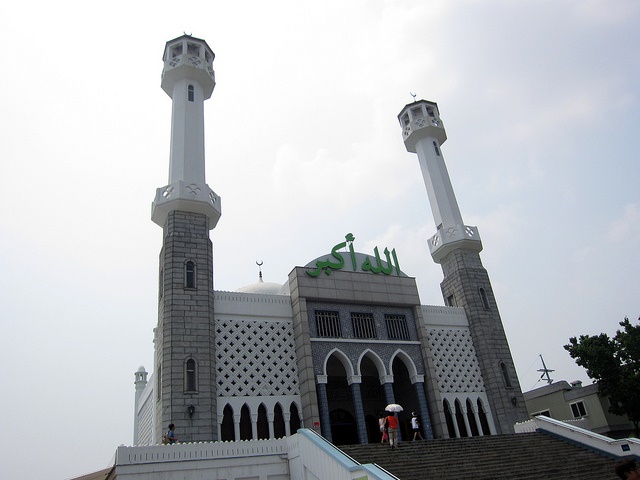The Peninsula
A History of Islam in Korea

By Lilka Marino
On the evening of 23 September, 1.6 billion Muslims all across the globe will begin their yearly observance of Eid al-Adha, or the Feast of the Sacrifice. During this time, Muslims from North Africa to East Asia honor both the sacrifices made by Abraham and the end of the traditional season of pilgrimage to Mecca with acts of charity and prayer. Korea is no exception, with an estimated population of 150,000 Muslims, 45,000 of whom are native Korean. While only 0.3 percent of Korean residents describe themselves as Muslim, Islam has left an indelible mark in Korean history.
Muslims in Korea face unique issues today, especially with religious requirements that many non-Muslims may not understand. Dietary restrictions known as halal, as well as the restriction on drinking alcohol sometimes make socializing with peers difficult, according to one young Korean Muslim. Another described the prejudice Muslim Koreans face after the September 11 attacks in America; some are routinely labeled as “terrorists” and warned against committing violence “in the name of Islam.” One woman spoke about the odd looks she receives when wearing her headscarf in public, and a few occasions when strangers took pictures of her. However, these incidents have decreased as time goes on, and more Koreans become familiar with Islam, and its unique history in the region. This is a result of two growing populations: foreign workers who chose to remain in Korea and raise a family, and Koreans who actively choose to convert.
Korean conversion to Islam is not new. Islam was first introduced to the Korean peninsula in the ninth century through Arab and Persian traders. They were responsible for the first non-East Asian maps of the region to be drawn and travel writings involving their adventures in Unified Silla. Most of these traders were from what is now modern-day Iraq, though some archeological evidence from this era depict Silla palace guardians with distinctly Persian characteristics. They settled down and intermarried with the local Korean community, building a community that would last for the next few centuries.[1]
Muslims enter the official Korean historical record in September of 1024, when Arab traders embarked on a large trade mission of one hundred men to the Goryeo kingdom during the reign of King Hyeonjong. This opened the door to Central Asian traders and migrants to settle down in Korea, as well as some of the Chinese Hui. Another wave of migrants would come after the Mongols established control in 1259, as the Uyghurs were the go-between for the Mongol rulers and Korean government. After the transfer of power to the Yuan dynasty, many permanent Muslim populations were established, with the creation of mosques known as the Ye-kung, or “ceremonial halls”. Two of these settlers eventually went on to become the founders of two familial clans, including the Jang, who went on to become high ranked government officials with both the Goryeo and Joseon monarchies.
With the advent of the new Joseon dynasty, however, the Muslim population found itself accountable to new laws that restricted their ability to practice Islam. In 1427, King Sejong ordered the Muslim population to remove their ceremonial headgear, shut down the Ye-kung, and conform to Confucian norms. It is after this legislation that Korean Muslims disappear from the historical record for a couple of centuries, after centuries of coexistence and even a degree of cultural assimilation.
Before they disappeared from record, the Muslim population of Korea left behind their scientific and cultural contributions. The first Korean world map, Kangnido, was drawn with the help of information thought to have been gathered by Muslim traders. The Huihui Lifa was a set of Chinese astronomical tables that originated with Muslim texts known as the zij. When King Sejong started calendar reforms during the Joseon era, the new calendar was based on information from the Muslim zij. This also established a tradition of Muslim influence over native Korean astronomical studies that lasted until the nineteenth century. Another notable contribution from the Huihui is soju; the first distilleries were built by the Mongols around the city of Kaesong with a recipe derived from arak, a distilled beverage from the Levant. Soju is still called arak-ju in the area surrounding Kaesong, and is still beloved by Koreans today.
Islam had all but vanished from Korea by the time it was reintroduced during the nineteenth century when Korean settlers migrated to Manchuria. During the Korean War, a large allied contingent from Turkey known as the Turkish Brigade not only assisted with defense, but also with the humanitarian work of rebuilding Korea. When the war ended, some of these soldiers remained as UN peacekeepers and began proselytizing. By 1955, the Korea Muslim Society (later the Korea Muslim Federation) was established. As trade with the Middle East increased in the 1970s, Koreans who served as foreign workers in Saudi Arabia converted to Islam, and brought the religion back home. President Park Chung-hee accepted offers to fund the construction of mosques from Muslim nations such as Malaysia, as a token of goodwill, which led to the construction of the Seoul Central Mosque in 1977. Today, there are mosques in Busan, Anyang, Gwanju, Jeonju, Daegu, and Gyeonggi to accommodate a steadily growing Muslim population in Korea.
Lilka Marino received her Masters of Arts in Liberal Studies from Hollins University with a double concentration in leadership theory and social sciences. Her interests include North Korean politics, Korean history, and traditional Korean culture. The views expressed here are her own.
Photo from Julio Martinez’s photostream on flickr Creative Commons.
[1] Lee, Hee-Soo. (1991). Early Korea-Arabic maritime relations based on Muslim sources. Korea Journal 31(2), 21-32.
